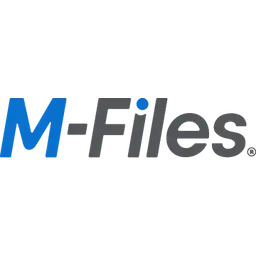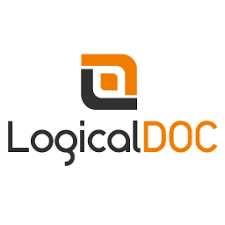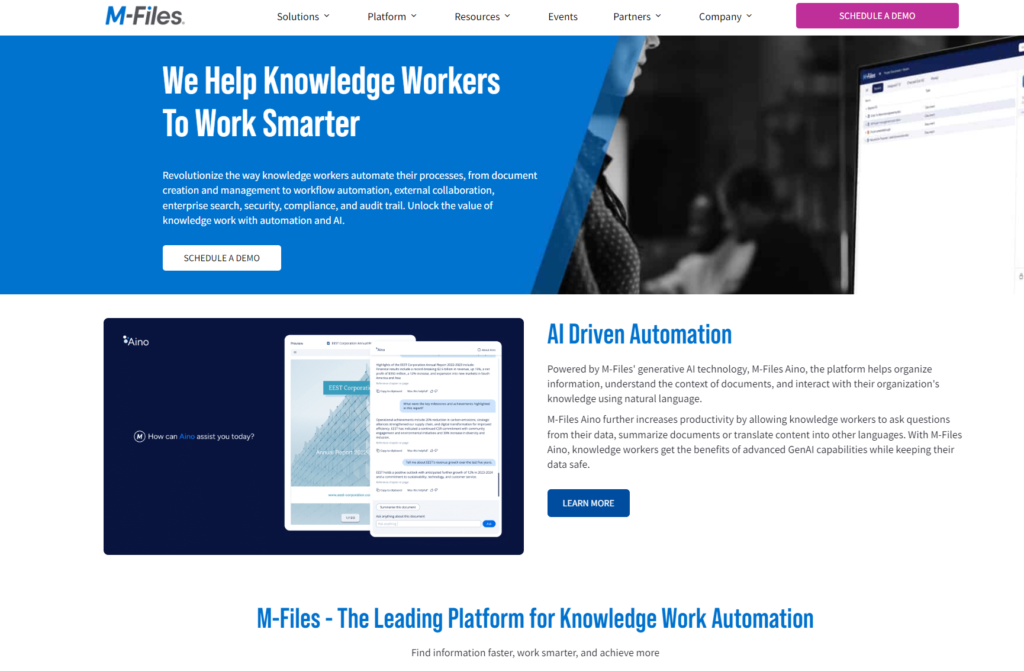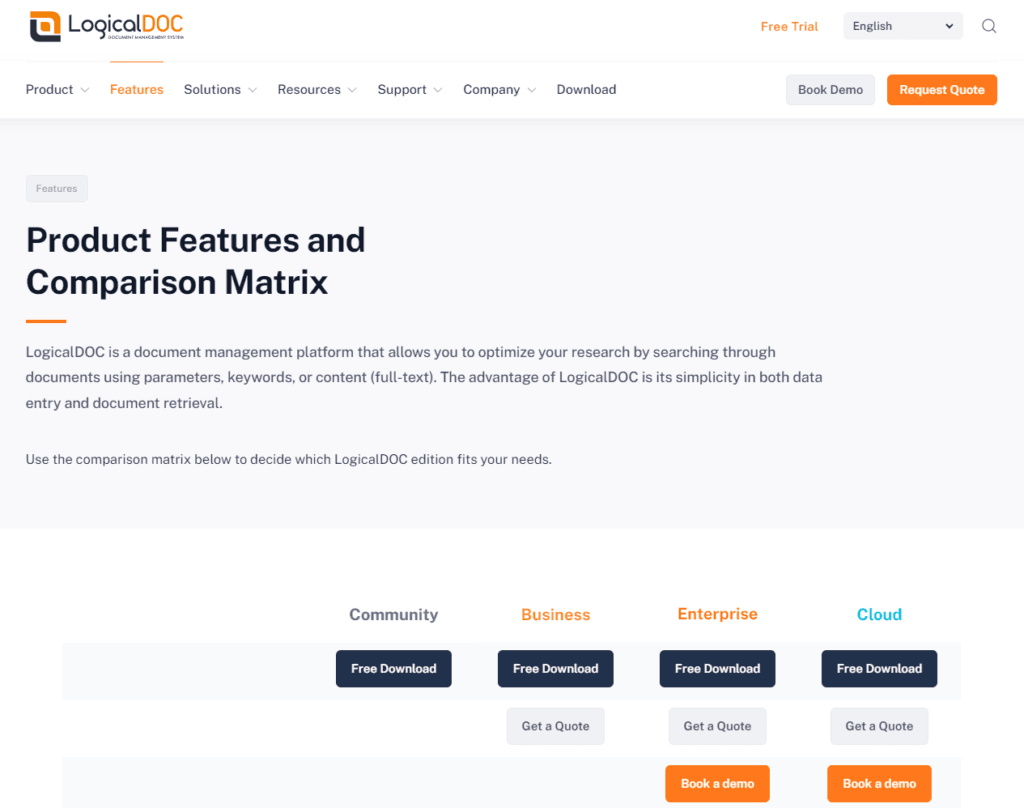Embarking on the quest to discover the ideal document management system for your organization is akin to setting sail on a vast digital ocean, searching for the perfect island that meets all your needs for treasure storage and map making. In this sea of options, M-Files and LogicalDOC emerge as two notable islands, each with its unique landscape and treasures. M-Files, with its innovative approach to document management, promises to turn chaos into order by making documents findable and usable efficiently. On the other side, LogicalDOC sails with the flag of simplicity and effectiveness, offering a streamlined experience for managing documents and enhancing collaboration.
M-Files | LogicalDOC |
|---|---|
| G2 Score – 4.3 out of 5 stars | G2 Score – 4.4 out of 5 stars |
| TrustRadius Score – 9.2/10 | TrustRadius Score – 8.2/10 |
Ease of Use and User Experience: Navigating with Ease
In the realm of document management systems, the ease of use and the overall user experience are akin to the smoothness of the sea; the calmer the waters, the smoother the voyage. A system that is intuitive and user-friendly ensures that the crew can navigate their tasks without facing the stormy seas of confusion and complexity.
M-Files: The Intuitive Navigator
M-Files stands out with its unique approach to document management, emphasizing an intuitive user experience that revolves around what the document is rather than where it’s stored. This philosophy ensures that users can easily find and access documents based on their content and context, effectively turning a sea of data into a well-mapped treasure island.
M-Files integrates artificial intelligence to streamline document categorization and retrieval, making the user experience smoother and more efficient. The platform’s adaptability to various industries and its seamless integration with commonly used applications further enhance its usability, making it a compelling choice for organizations looking for a flexible and intelligent document management solution.
LogicalDOC: The Streamlined Schooner
LogicalDOC, on the other hand, sails the document management sea with the flag of straightforwardness and efficiency. Its clean, web-based interface allows for quick navigation and easy document access, ensuring that users can manage their documents without a steep learning curve. The platform offers a suite of features designed to facilitate document storage, retrieval, and collaboration, all within a user-friendly environment.
LogicalDOC’s focus on simplicity does not come at the expense of functionality; it provides a robust set of tools, including advanced search options and workflow automation, tailored to enhance productivity and streamline document-related processes.
Integration Capabilities: Sailing with Support
The ability of a document management system to integrate with other software applications and services is akin to a ship’s compatibility with various navigational aids and communication tools; it ensures a cohesive and unified journey across the digital ocean.
M-Files: The Connector of Digital Archipelagos
M-Files excels as a connector of digital archipelagos, offering robust integration capabilities that allow it to seamlessly mesh with an organization’s existing software landscape. Its ability to integrate with a wide range of applications, from CRM and ERP systems to various Microsoft Office products, ensures that documents and data flow smoothly between different platforms.
M-Files utilizes metadata-driven architecture, which not only aids in the organization and retrieval of documents but also facilitates integration by mapping document relationships across systems. This approach enables organizations to maintain a cohesive digital environment where information is easily accessible, regardless of the application being used.
LogicalDOC: The Streamlined Inter-Island Ferry
LogicalDOC sets sail as a streamlined inter-island ferry, providing efficient and straightforward integration capabilities designed to enhance collaboration and document management within an organization’s digital ecosystem. It offers out-of-the-box integration with office suites such as Microsoft Office and Google Docs, allowing users to easily edit and manage documents within familiar environments.
LogicalDOC’s web services API facilitates further integration with third-party applications, ensuring that organizations can tailor the system to fit their unique workflow needs. While it may not offer the breadth of integration found in M-Files, LogicalDOC’s focus on key integrations and simplicity makes it a viable option for organizations looking for a document management solution that complements their existing tools without overwhelming complexity.
Customer Support and Community Resources: The Beacon and Harbor
Effective customer support acts as a beacon guiding users through foggy situations, while a vibrant community serves as a harbor where users can exchange knowledge and best practices.
M-Files: Guiding Light with a Professional Crew
M-Files shines brightly with its comprehensive customer support structure, designed to assist organizations throughout their document management journey. Offering a range of support services from online resources, detailed documentation, and training sessions to personalized support from experienced professionals, M-Files ensures that help is readily available when needed.
The company also fosters a professional community through forums, user groups, and events, facilitating the exchange of ideas and experiences. This level of support is akin to having a seasoned crew and a network of supportive ports, ensuring organizations can effectively implement, utilize, and optimize their M-Files document management system.
LogicalDOC: The Community-Focused Caravel
LogicalDOC sails with a focus on community engagement, offering a suite of support resources that cater to its users’ needs. With accessible online documentation, tutorials, and a responsive support team, users can easily find answers to their questions and solutions to their challenges. LogicalDOC’s community forums are particularly noteworthy, providing a platform for users to share tips, ask questions, and collaborate on best practices.
This emphasis on community support makes LogicalDOC akin to a caravel that thrives on the collective knowledge and experience of its user base, ensuring that even smaller organizations without extensive IT support can navigate the document management waters effectively.

Related: Check out our free SEO suite

Security and Compliance: The Ship’s Guard and Sextant
The security features and compliance capabilities of a document management system act as a ship’s guard and sextant, protecting valuable data and navigating through the regulatory seas.
M-Files: The Secure Galleon
M-Files, with its emphasis on security and compliance, resembles a secure galleon, armed to the teeth with advanced measures to protect against digital marauders. It provides comprehensive security features, including encryption of data in transit and at rest, detailed access controls, and robust authentication mechanisms.
M-Files shines in its ability to manage and enforce compliance policies automatically, leveraging its metadata-driven architecture to ensure that documents are handled according to regulatory requirements. With support for various compliance standards, such as GDPR, HIPAA, and ISO certifications, M-Files serves as a vigilant protector of an organization’s digital assets, ensuring both security and regulatory navigation are handled with precision.
LogicalDOC: The Agile Corsair
LogicalDOC, akin to an agile corsair, offers streamlined security features that focus on simplicity without sacrificing protection. It includes essential security measures like encryption, access control, and audit trails, providing a solid foundation for safeguarding documents.
While LogicalDOC may not boast the extensive compliance-specific features of M-Files, it supports fundamental compliance needs through its document versioning, secure sharing, and retention policies. This makes LogicalDOC a suitable option for organizations looking for a document management system that combines ease of use with effective security and basic compliance capabilities.
Collaboration and Workflow Automation: The Rigging and Sails of the Ship
Collaboration features and workflow automation within a document management system act as the rigging and sails that propel the ship forward, enabling teams to work together efficiently and automate processes to navigate the business seas more effectively.
M-Files: The Sophisticated Frigate
M-Files serves as a sophisticated frigate, equipped with advanced collaboration tools and workflow automation capabilities that enable smooth sailing through document-related tasks. Its unique approach to managing documents based on metadata rather than folder locations allows users to easily share and access information without duplicating efforts. M-Files supports version control, ensuring that team members are always working with the most current document versions.
Additionally, its robust workflow automation features allow organizations to streamline document-centric processes, from document approvals to compliance checks, by automating repetitive tasks and routing documents appropriately based on predefined rules. This level of sophistication in collaboration and automation makes M-Files an ideal choice for organizations looking to optimize their document management practices and enhance team productivity.
LogicalDOC: The Agile Cutter
LogicalDOC, like an agile cutter, offers streamlined collaboration and workflow automation features designed to facilitate teamwork and improve document handling efficiency. Its user-friendly interface allows team members to easily share documents, collaborate in real time, and keep track of changes with version control. LogicalDOC’s workflow automation capabilities, while not as extensive as M-Files, provide essential tools for automating document review and approval processes.
This makes it possible for teams to reduce manual intervention and speed up document-centric workflows. LogicalDOC’s emphasis on simplicity and ease of use in its collaboration and automation features makes it a compelling option for organizations seeking to enhance productivity without the complexity of more advanced systems.
Pricing and Subscription Models: Charting the Financial Course
Much like the careful allocation of resources is essential for a successful voyage, understanding the financial implications of your chosen document management system is crucial. The right pricing model not only fits within your budgetary constraints but also aligns with your organization’s size, needs, and future growth. The cost structure of a document management system is akin to planning for a voyage’s provisions—it requires foresight and an understanding of what lies ahead.
M-Files: The Customizable Galleon
M-Files takes the approach of a customizable galleon, offering a flexible pricing model that caters to a wide range of organizational needs. The system’s cost can vary significantly based on factors such as the number of users, the level of customization required, and the specific features and integrations needed.
M-Files provides a tiered pricing structure, allowing organizations to choose a package that matches their current requirements while offering the option to scale as their needs evolve. While this flexibility is advantageous, it also means that organizations need to carefully assess their requirements to understand the total cost of ownership, including potential future expansions and the need for additional features or integrations.
LogicalDOC: The Streamlined Schooner
LogicalDOC, in contrast, is like a streamlined schooner, offering a clear and straightforward pricing model. It provides tiered subscription options based on the number of users and storage needs, making it easier for organizations to predict their expenses and budget accordingly. LogicalDOC’s pricing includes access to core document management and collaboration features, with additional costs for premium features or increased capacity clearly outlined.
This transparency in pricing makes LogicalDOC an appealing choice for small to medium-sized businesses or departments within larger organizations looking for a cost-effective document management solution without hidden fees or complex pricing structures.
Pricing
M-Files:

LogicalDOC:

Conclusion
In navigating the vast digital seas to find the ideal document management tool, our journey comparing M-Files and LogicalDOC has charted a course through various key aspects. Each system, like a well-crafted vessel, offers distinct features designed to meet specific organizational needs.
M-Files emerges as a sophisticated frigate, armed with advanced features and a customizable framework that caters to a wide array of business requirements. It excels in providing a secure, compliant, and highly adaptable environment, supported by comprehensive customer service. Ideal for organizations requiring a tailored solution with extensive integration options and robust workflow automation, M-Files ensures that navigating the complexities of document management is both efficient and scalable.
LogicalDOC, sailing as a nimble caravel, prioritizes simplicity, accessibility, and community-supported navigation. With its user-friendly interface, straightforward pricing, and active user community, LogicalDOC offers a streamlined approach to document management. It’s well-suited for businesses seeking ease of use, effective collaboration tools, and a solution that facilitates quick adaptation and fosters knowledge sharing among its users.
Read Next:
- AWeber vs EmailOctopus: The Best Email Marketing Tool
- ActiveCampaign vs eSputnik: The Best Email Marketing Tool for 2024
- ActiveCampaign vs MailUp: The Best Email Marketing Tool for 2024
- AWeber vs Campaigner: The Best Email Marketing Tool
- ConvertKit vs MailerLite: The Best Email Marketing Tool for 2024






















Comments are closed.